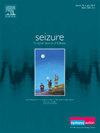The value of self-reported variables in epilepsy monitoring and management. A systematic scoping review
IF 2.7
3区 医学
Q2 CLINICAL NEUROLOGY
引用次数: 0
Abstract
Purpose
Self-reported records of seizure occurrences, seizure triggers and prodromal symptoms via paper or electronic tools are essential components of epilepsy management. Despite recent studies indicating that this information could hold important clinical value, the adoption of self-reported information in clinical practice is inconsistent and of uncertain value.
Methods
We performed a systematic scoping review of the literature following Preferred Reporting Items for Systematic Reviews and Meta-Analyses (PRISMA) guidelines. A combination of different digital libraries was used (Embase, MEDLINE, Global Health, PsycINFO). The review examined acceptability, adherence, and ability to self-report or predict seizures, along with innovative applications of self-reported data. We comprehensively outline study characteristics, key results, and identified strengths and limitations.
Results
Sixty-eight full-text and two abstracts were included, where a total of 10 electronic tools were identified. Studies revealed high patient interest and acceptable adherence, particularly when tools were well-designed, and data shared with healthcare providers. While patients faced challenges in self-reporting or predicting seizures, a subgroup exhibited higher accuracy and compliance. Studies underscored the value of self-report information in identifying seizure clusters, understanding associations between self-reported seizure frequency and triggers, developing personalized seizure risk, forecasting and prediction models, and the potential benefits when integrated with wearable or implantable devices. Limitations included population selection, repeated dataset use, and the absence of gold standards for seizure counting.
Conclusion
Personalizing tools to collect self-report information, integrating them with wearable technologies, utilizing collected data for clinical outcomes, and merging them with electronic health records could provide a reliable resource for epilepsy monitoring and management.
自我报告变量在癫痫监测和管理中的价值。系统性范围审查
目的通过纸质或电子工具对癫痫发作、发作诱因和前驱症状进行自我报告记录是癫痫管理的重要组成部分。尽管最近的研究表明这些信息具有重要的临床价值,但在临床实践中采用自我报告信息的情况并不一致,其价值也不确定。方法 我们按照系统综述和荟萃分析首选报告项目(PRISMA)指南对文献进行了系统性的范围界定综述。我们结合使用了不同的数字图书馆(Embase、MEDLINE、Global Health、PsycINFO)。综述考察了可接受性、依从性、自我报告或预测癫痫发作的能力,以及自我报告数据的创新应用。我们全面概述了研究特点、主要结果,并确定了优势和局限性。结果共纳入 68 篇全文和 2 篇摘要,其中共确定了 10 种电子工具。研究结果显示,患者对电子工具的兴趣很高,使用情况也可以接受,尤其是在工具设计合理并与医疗服务提供者共享数据的情况下。虽然患者在自我报告或预测癫痫发作方面面临挑战,但一部分患者表现出较高的准确性和依从性。研究强调了自我报告信息在以下方面的价值:识别癫痫发作群、了解自我报告的癫痫发作频率与触发因素之间的关联、开发个性化的癫痫发作风险、预测和预报模型,以及与可穿戴或植入式设备整合后的潜在益处。结论将收集自我报告信息的工具个性化、将其与可穿戴技术相结合、利用收集的数据获得临床结果以及将其与电子健康记录合并,可以为癫痫监测和管理提供可靠的资源。
本文章由计算机程序翻译,如有差异,请以英文原文为准。
求助全文
约1分钟内获得全文
求助全文
来源期刊

Seizure-European Journal of Epilepsy
医学-临床神经学
CiteScore
5.60
自引率
6.70%
发文量
231
审稿时长
34 days
期刊介绍:
Seizure - European Journal of Epilepsy is an international journal owned by Epilepsy Action (the largest member led epilepsy organisation in the UK). It provides a forum for papers on all topics related to epilepsy and seizure disorders.
 求助内容:
求助内容: 应助结果提醒方式:
应助结果提醒方式:


